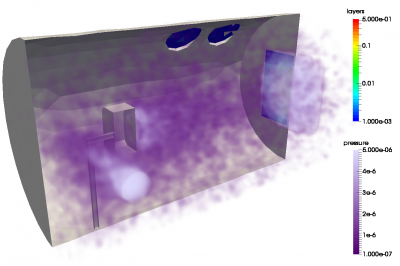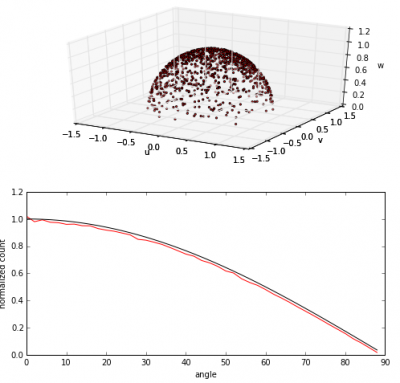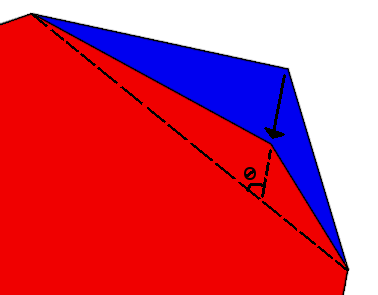-
Filter by category:
- Apps
- Contamination
- Embedded Systems
- Field Solvers
- Interactive
- Mesh Generation
- News
- Numerical Methods
- Papers and Codes
- Plasma Simulation
- Starfish
- Surface Interactions
- Uncategorized
- Visualization
Posts in Category Surface Interactions
Handling Surfaces: Line Triangle Intersection Example

This article presents an algorithm for performing particle-surface impact checks using a mixed triangular-quadrilateral mesh with warped and overlapping elements. (Dec 20 2017)
Detailed Surface Model

New detailed model was developed for the space-surface interface. Instead of using sticking coefficients, the model uses residence time to determine if a molecule "sticks". Adsorbed molecules are added to a surface layer and objects can also contain trapped gases diffusing to the surface. (Jun 30 2015)
Modeling Diffuse Reflection (or How to Sample Cosine Distribution)

Molecules impacting surfaces reflect either diffusely or specularly, Since diffuse reflection is more common, it is important to model it correctly. In this article we discuss how to model diffuse reflection by sampling from Lambert's cosine law. (Apr 2 2015)
Sputter Calculator (alpha version)

Online calculator and plotting program for normal and angular sputter yields using the models of Yamamura and Matsunami. (Mar 11 2015)
Surface Erosion

Every time a particle impacts a surface there is a chance that it will knock off or “sputter” some material from the surface. Over time this can cause noticeable degradation in high flux areas such as Hall thruster channels, electrostatic acceleration grids, etc. Even structures far downstream of a thruster can erode over time if they are near the main plume. This article explains the basic algorithms involved in determining how a surface will erode when exposed to a given flux. (Jan 1 2013)
Spacecraft Surface Charging

A spacecraft acts as an isolated probe and will become charged due to the presence of space plasma. Surface potential will change due to the thermal motion of electrons and ions. The potential will continue to change until the fluxes of the negative and positive charges perfectly balance each other. In this article we discuss the basics behind spacecraft charging and provide a simple spacecraft charging code example. (May 10 2011)